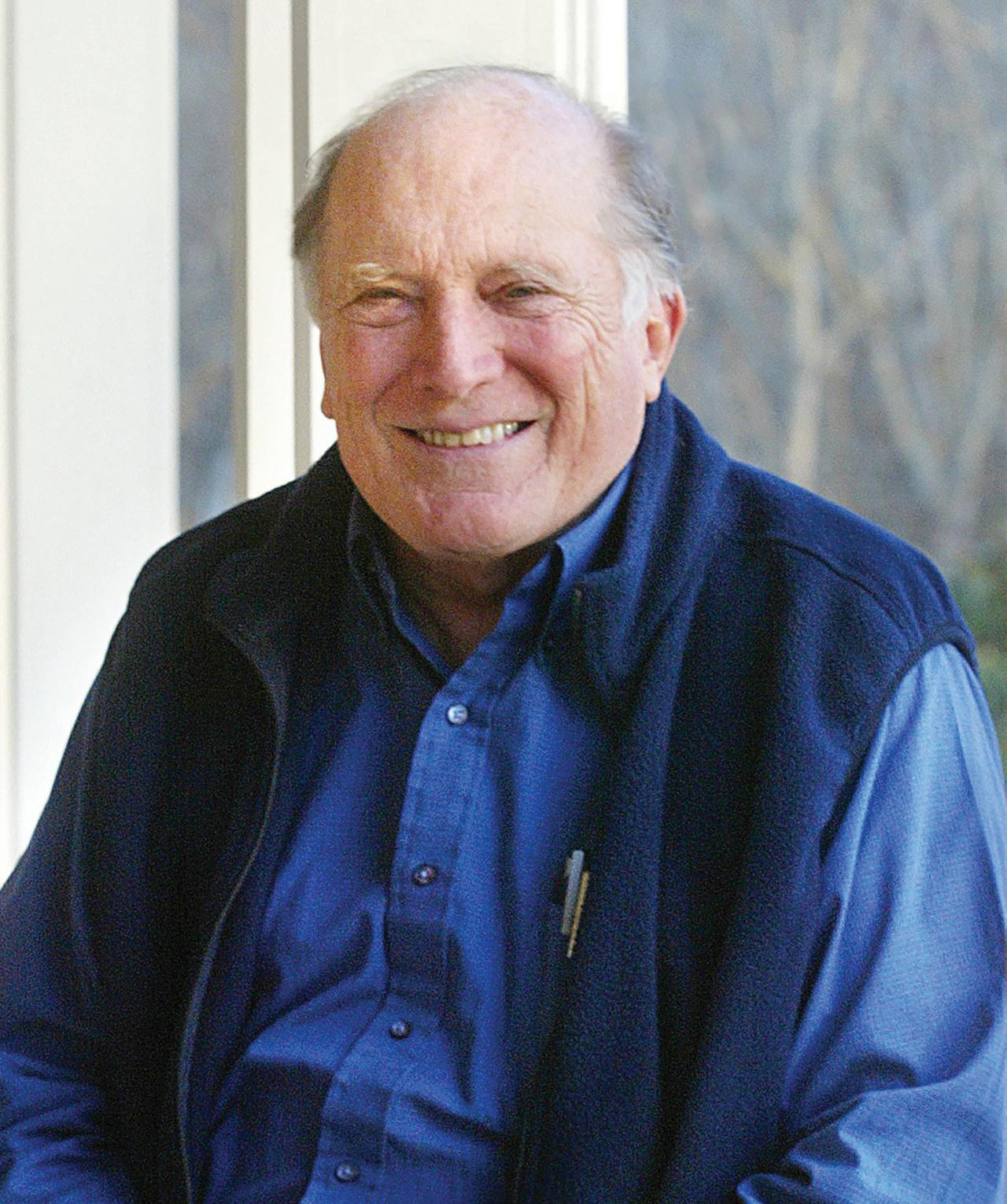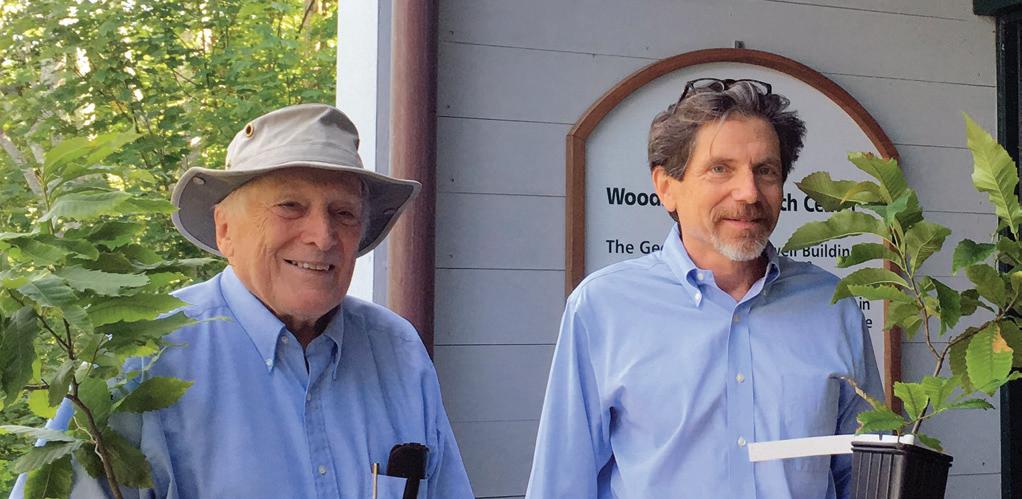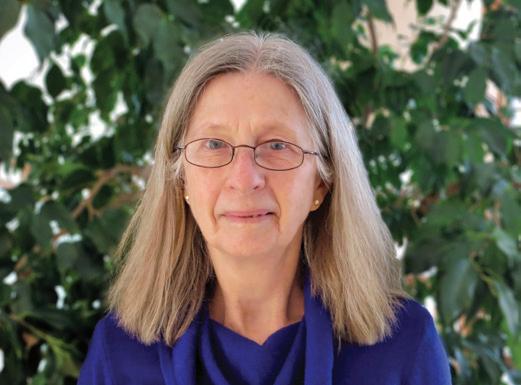
8 minute read
Remembering Dr. George Woodwell
With the passing of Dr. George Woodwell on June 18, 2024, we lost a pioneer and a visionary, a deeply good person, and for many in our community, a mentor and dear friend.
Woodwell’s scientific inquiries hit on the biggest environmental issues of the late twentieth century, including DDT, nuclear radiation, and what was known at the time as “the carbon dioxide problem.” His testimony at the first Congressional hearing on climate change in 1986 was remarkably prescient, and the issues he brought forth there—the threat of permafrost thaw, the importance of forests—have been enduring pillars of the Center’s work.
In a time when the biological sciences were increasingly focused on the molecular and cellular level, Woodwell was steadfast in pursuing an ecosystem-level understanding of the natural world. He started and led ecological research programs within the University of Maine, Brookhaven National Laboratory, and the Marine Biological Laboratory, before coming to the conclusion that the most pressing and important work required a new and independent organization of its own—one that not only conducted science, but actively influenced decision-making. Founded in 1984 as the Woods Hole Research Center, we later renamed ourselves Woodwell Climate Research Center, and George Woodwell’s vision continues to guide our work today.
Woodwell was also instrumental in the founding of several preeminent American environmental advocacy organizations—Environmental Defense Fund, Natural Resources Defense Council, and World Resources Institute. He also recognized the need for international policy and governance to address climate change, guided by global scientific expertise. He played important roles in the creation of what became the Intergovernmental Panel on Climate Change (IPCC), which was recognized in 2007 with a Nobel Peace Prize, and the United Nations Framework Convention on Climate Change—the treaty that has driven international climate negotiations for more than thirty years.
In addition to his intellect and foresight, Woodwell’s energy, wisdom, and wit were captivating. He had the remarkable ability to sustain both outrage at environmental destruction, and an abiding love of the natural world, using both to pilot us towards his positive vision of a better world for all, which he shared in his 2016 book, A World to Live In.
Woodwell leaves behind many devoted friends and family members, most especially his wife Katharine, who played her own integral role in making his vision a durable reality; his children and their spouses Caroline, (Chris DeForest), Marjorie, (Woody Swan), Jane, (Chris Soper), John, (Marie Hull); and his grandchildren Katharine and David Soper, and John and Robert DeForest.
The family welcomes gifts in George’s memory made to the George M. Woodwell Endowment Fund at Woodwell Climate Research Center. woodwellclimate.org/ george-woodwell-fund
The Center hosted a Celebration of Life for George Woodwell on July 26, 2024. Below are excerpts of remarks from friends and colleagues. A recording of the event is available online, including remarks from George’s family, at: woodwellclimate.org/stories/video

Max Holmes, President & CEO of Woodwell Climate
I was incredibly fortunate to have George as a mentor, an advisor, and a friend for almost 20 years now. I distinctly remember almost exactly 20 years ago, when I was interviewing for a position as a scientist here in George’s office. I knew of George, certainly I knew of his scientific career and the amazing things he had done; I had briefly met him in passing a couple of times, but I can say I was incredibly nervous when I walked into that office for the interview. And somehow, I made it through.
It was a privilege to work with George and Katharine while they still led the institution, and certainly, still, to be here today. I was reflecting this morning over the past three years, when I’ve been in the position of the President, how my relationship with George continued to grow. He would frequently call me with suggestions, with encouragement, and a lot of enthusiasm. I spoke to him not so long before he passed. He just had read something about the work we were doing, and he just called to say how fantastic it was and what a good job we were doing. I say that really reflecting. I want our staff to hear that because we are all, on a daily basis, carrying on this legacy that he began. The world’s a better place because George was here.

John Holdren, Former President & CEO of the Center
When I met George at the end of the ’60s, he was running ecosystem research at the Brookhaven National Laboratory on Long Island. Two of the projects that he invented and led there turned out to be scientific home runs of a magnitude that few scientists reach even once in their lifetime.
In the first one, he provided the first ever quantitative measurements showing how ecosystems would respond to ionizing radiation following a large nuclear reactor accident or explosions of nuclear weapons. George’s second scientific home run from his base at the Brookhaven Lab was a set of studies of the accumulation of DDT and its residues in the food webs of a Long Island estuary. Those findings were a crucial piece of the science that led to the banning of DDT in the United States.
George himself played a role in that outcome that went beyond his science. A hallmark of his approach to the world through his whole career was that he didn’t just want to understand problems, he wanted to contribute to fixing them.

Max Holmes read additional remembrances, including a message from Dr. Foster Brown.
Foster Brown, Senior Scientist Emeritus
During the late 1980s, I watched as the Center grew from one employee to become a referenced institution for global change, research, and policy. At the time I was hired in 1985, the entire Woodwell family was cleaning and painting the offices and workspace for the Center in the basement of the Fisher House.
George, in some ways, was a simmering volcano of emotion covered with a crust of New England stoicism. Katharine would help him navigate the course, acting effectively as George’s better angel. They formed a team that managed to significantly change the discussion about climate change. What time, and my experience with George and his family, have given me is the perspective of how important it is to dream and to work to make those dreams a reality even when you are cleaning a dusty office in a church basement.

Richard (Skee) Houghton, Senior Scientist Emeritus
I started working in 1966 in the biology department at Brookhaven National Laboratory, and I am both privileged and honored and fortunate to have known and worked with George since then. My whole life and career were intertwined with his starting then in 1966.
It’s impossible to say what I would’ve been, what I would have done, what I would have accomplished had George not hired me. So, it made all the difference. He contributed enormously to who I am.
George was a remarkable man. Looking back, two things in particular stand out for me. One, he was a man on a mission. Two, he had a genuine interest in others, in everyone around him. He was always thinking, always doing, writing, promoting, advocating, questioning. He was always engaged. He was on a mission.

Philip Duffy, Former President & CEO of the Center
George was a forceful communicator. He was a good writer, and he was a great speaker. I remember walking over to an event with him one day where we were both going to speak, and he looked at me and said, “Now, we’re not going to be bashful.” And guess if he was.
George did like to be a little bit outrageous. He liked to say, “I’m mad as hell.” And that’s how I knew George was okay. When I said, “George, how are you doing?” he would go, “I’m mad as hell.” I’m like, “Okay. George is all right.” But George was mad as hell about continued apathy, continued lack of progress, continued misinformation, continued delay-ism, and continued obstructionism. And we should be mad as hell, too. As we continue our important work, as we honor George’s legacy, let’s be mad as hell and let’s not be bashful.

Allison White, Communications Associate & Manager of Administration (retired)
George was a fine and prolific writer, often reminding us that the earth is finite. His prose was elegant and irresistible. And he paid attention to Katharine’s opinion. More than once, I heard her exclaim, “George, you can’t say that!” I longed to know to what she was referring, but that was, in any case, classic George and Katharine, whose intellect, enthusiasm, hard work, mutual respect, plus a healthy dash of humor became the mighty pillars of the Center.
What George accomplished in life is what he was meant to do. The greatest testament to his work is right in front of us with this extraordinary campus and its majestic turbine, the place that carries forth his vision for a world that works. I will always love the Center whose essence stems from George and Katharine.










